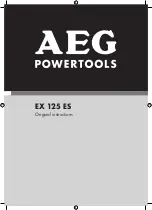
7
INSTRUCTIONS
WARNING:
1.
Make sure the Sander switch is in the OFF position before you plug the unit in.
2.
Never change the sandpaper while the sander is plugged in.
3.
Check breaker circuit to be used, 20 amp is the minimum required.
4.
Always wear eye protection, ear protection and dust mask while operating the sander.
5.
Empty the vacuum system in an area away from flammable materials and flame or fire.
TOOLS NEEDED
1.
Hammer
2.
Pry bar; to remove trim
3.
Paint scraper; to scrape corners and hard to reach places.
4.
Nail set
5.
Vacuum system; using a 1.5” ID vacuum hose to collect dust created by sanding process.
6.
Plastic draping; to cover and isolate work areas.
7.
Masking tape
8.
Wood filler
9.
Mineral spirits and or tack cloths; to remove fine dust particle prior to coating floor with
finish.
ROOM SETTING AND FLOOR CHECK
1.
Remove all existing furniture, carpets, floor mats, clutter, and curtains from the area to
be sanded. Sweep the floor thoroughly.
2.
Remove all nails, and metal fasteners that protrude from the surface to be sanded.
These items may damage sanding pads, sandpaper or prevent effective sanding.
3.
Check for cracks and niches in the area to be sanded and repair damaged areas.
Excessive damage may be repaired with wood filler (allow sufficient drying time).
Follow wood filler manufacture instructions for use.
4.
Put dust protection on all doorways and heat vents in the form of drop cloths and plastic
sheets. Vacuum the room thoroughly.








































